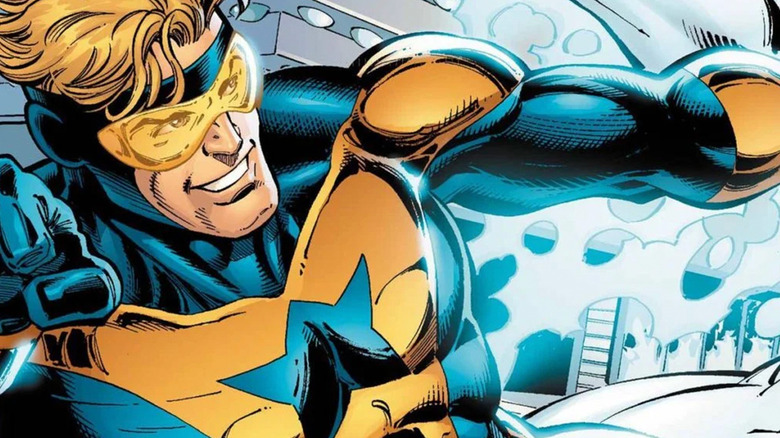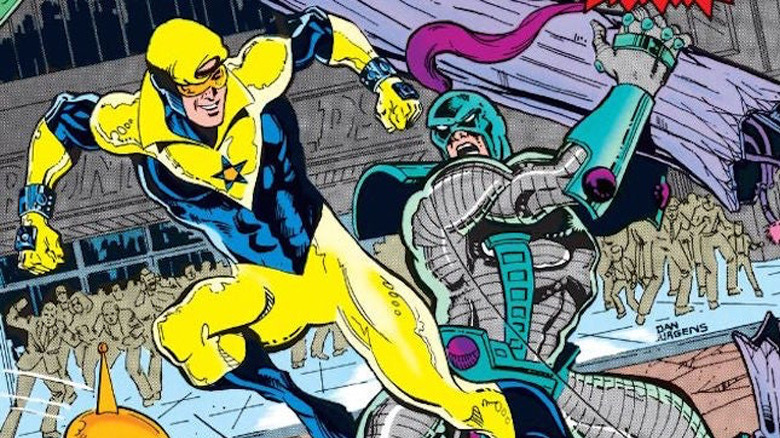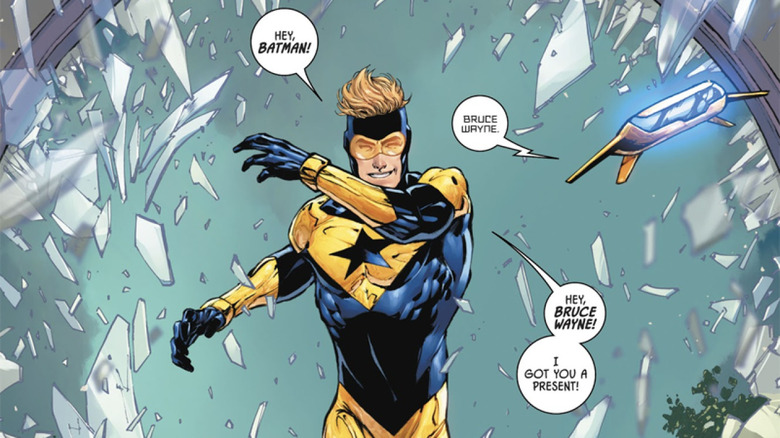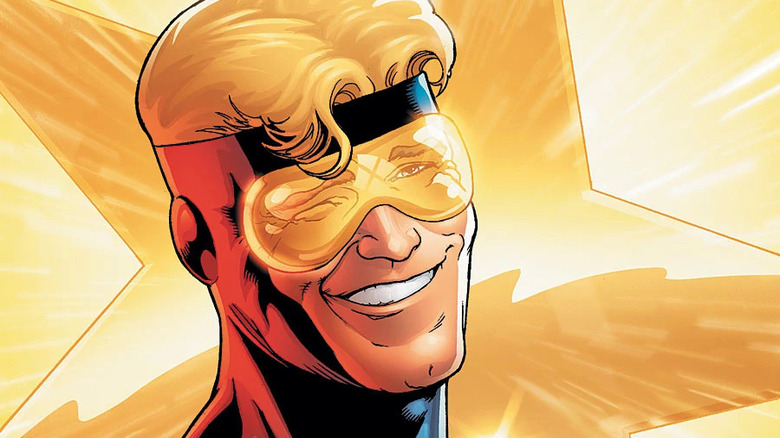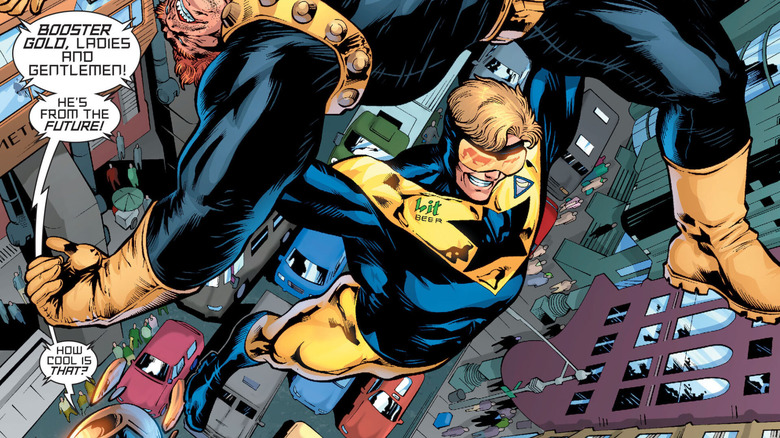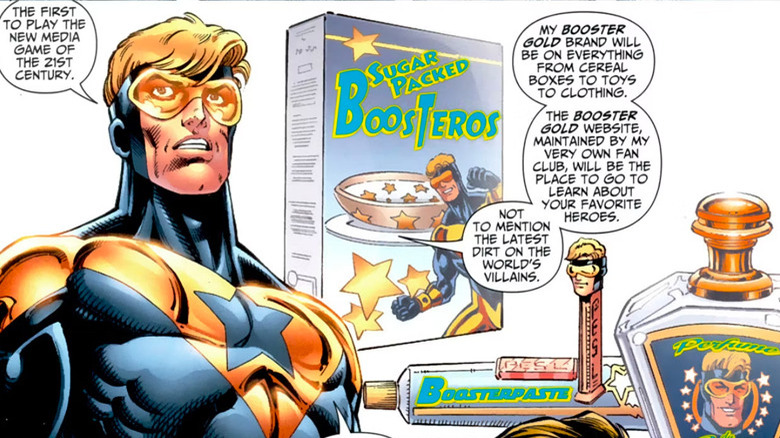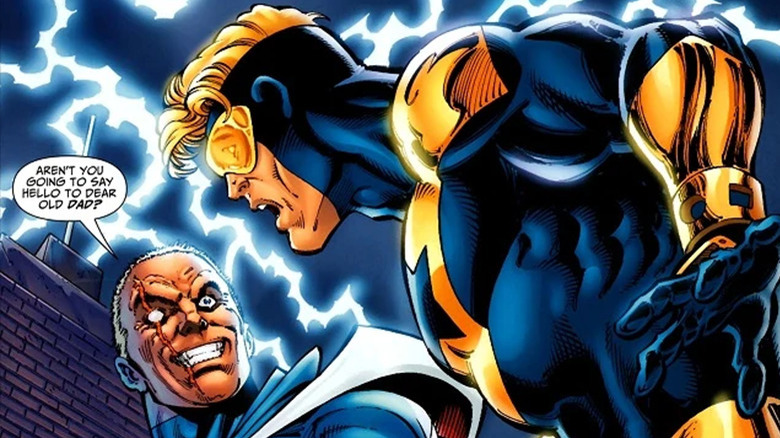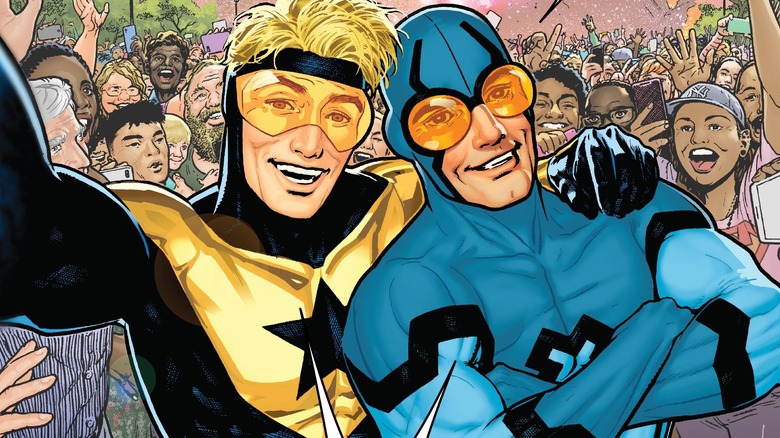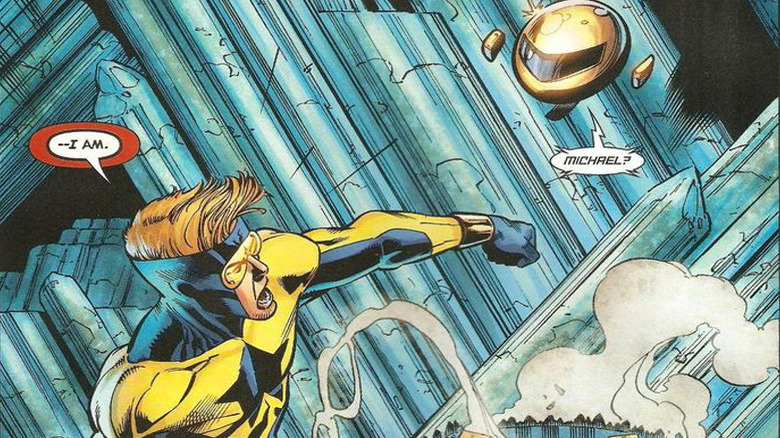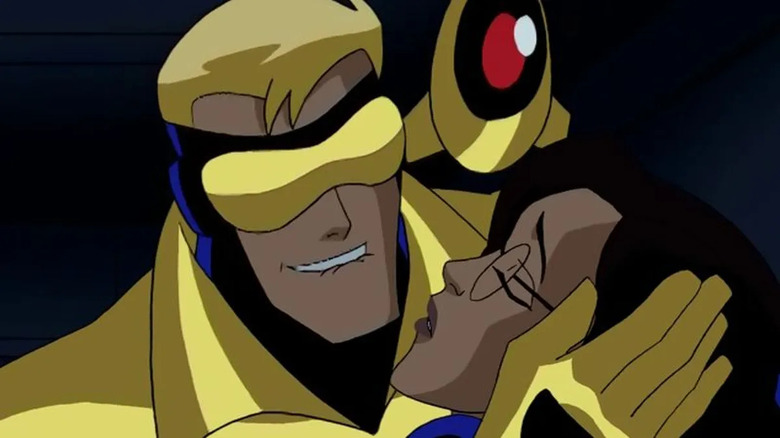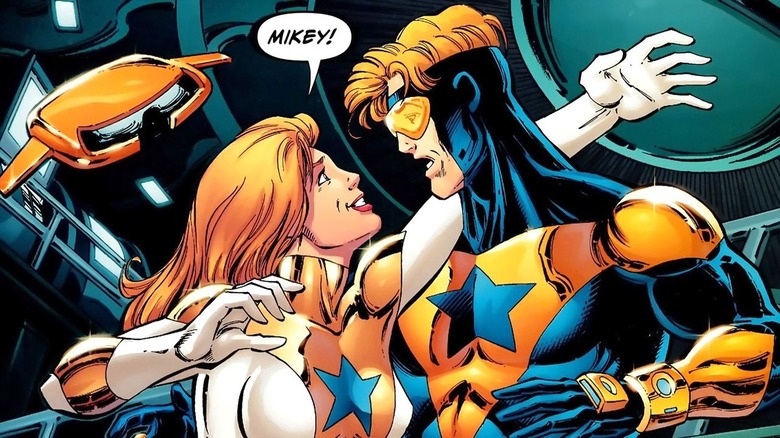Booster Gold: 11 Facts About DC's Time-Traveling Superhero Only Huge Fans Will Know
One of the greatest aspects of the long-spanning DC Comics universe is never being sure which characters will catch on. New characters, especially in the world of comic books and graphic novels, are a dime a dozen. What might be intended to be a breakout character set for high-profile success, can easily flop and be relegated to immediate obscurity. However, every once in a blue moon, a character comes along who, due to the creative team behind them and their presentation, develops major staying power.
Booster Gold is most definitely one of those characters, having been a part of DC Comics since his 1986 debut. Given the character's roots in time travel, Booster's history is both a bizarre and fascinating one. With the character now set for a live-action adaptation at some point in the future as part of James Gunn and Peter Safran's DC Universe reboot, it felt appropriate to open up his history book. So grab your Sugar Packed Booster-Os and enjoy some facts about DC's time-traveling superhero, Booster Gold!
He was the first post-Crisis character
When it comes to the history of DC Comics, there are few events in its history as game-changing as "Crisis on Infinite Earths." Simply put, by the time the 1980s came around, DC's in-universe continuity was nothing short of a mess. Not only was it hard to keep track of various backstories and long-term character affiliations, but which version of the hero you were following became garbled as well. This was especially difficult due to DC's wide-spanning multiverse, which accounted for countless alternate versions of heroes and villains.
So writer Marv Wolfman, best known for "The New Teen Titans," had an idea to simplify things in a big bad way. What came from this was "Crisis on Infinite Earths," a blockbuster event that saw every corner of the DCU rocked by a multiverse-wide cataclysm. The story saw the end of several prominent characters such as Barry Allen aka The (second) Flash and Kara Zor-El aka Supergirl. In the wake of "Crisis," DC had the chance to start fresh with rebooted versions of their characters, free of all the previous continuity.
This also meant the introduction of a brand new generation of characters as well, and this included Booster Gold. In fact, as explained in "DC Comics, Year By Year: A Visual Chronicle," Booster Gold was the first major character introduced following the event.
He's a key character in several controversial storylines
For as great a character as Booster Gold is, that doesn't mean his track record in terms of storylines is sterling. For every story like "52," there are going to be a few like "Heroes in Crisis" or "The Gift" — both frustrating storylines for very different reasons.
"Heroes in Crisis" was DC's attempt at tackling the touchy subject of mental health through their roster of characters. Following the murder of several characters, including Roy Harper and Wally West, the only two suspects are Harley Quinn and Booster Gold. It's later revealed that neither of them did it, not that the book made either of them convincing red herrings, and the true culprit was Wally West. It's explained that the grief of having lost his family was enough to result in a speed force explosion that killed those around Wally at the time. It's one of the most controversial DC stories.
But Booster is just supplemental to that story's stupidity; to see him poorly written in an entirely different way, let's take a look at "The Gift." Ahead of Batman's wedding to Catwoman, a can of worms in and of itself, Booster opts to give Batman a very special wedding gift. That gift in question involves going back in time and stopping the murder of his parents to give Bruce a happier life. This results in a warped timeline where Batman uses guns, Catwoman is a crazed murderer, and Hal Jordan has killed himself. These are two very poorly executed storylines and far from the comics one should seek out when checking out Booster Gold.
If you or anyone you know is having suicidal thoughts, please call the National Suicide Prevention Lifeline by dialing 988 or by calling 1-800-273-TALK (8255).
He almost had a TV show in the 2010s
With Booster's consistent popularity, he's always been mere inches away from greater mainstream exposure, but until recently he's never been slated for his own live-action solo project. There was his one-off appearance on "Smallville" back in 2011, but that never led to any other appearances. There was also Mike on "DC's Legends of Tomorrow," played by Donald Faison, that character was never confirmed to be the Booster we know. As far as seeing Booster fully realized in his trademarked blue and gold gear with Skeets at his side, fans are still waiting.
However, it might interest some people that, back in the 2010s, a script based on the character was ordered by the SyFy channel (via The Hollywood Reporter). The script was set to be penned by Andrew Kreisberg, writer for such shows as "Fringe" and "Star Wars: The Clone Wars." Additionally, the series was set to be produced by Berlanti Productions and Warner Horizon Television, the same group behind many of the DC shows on The CW Network.
Unfortunately, after several years in development, the series was dead in the water following several allegations against Kreisberg which resulted in his firing (via Variety). This setback meant that fans would have to wait a little while longer before they got to see Booster in live-action.
He was created by writer Dan Jurgens
We mentioned how Booster Gold was the first major new character to debut following the events of "Crisis on Infinite Earths." However, what we didn't mention was the man who is responsible for beginning Booster to life, writer and artist Dan Jurgens.
For those in need of a crash course, Jurgens first rose to prominence in the early-'80s following his graduation from the Minneapolis College of Art and Design. He broke into DC Comics through his artwork on a lesser-known title called "The Warlord" and from there he continued to branch out. Following that, he lent his burgeoning writing talents to the "Sun Devils" limited series, eventually taking over the writing duties full-time. A short while later, in the wake of "Crisis on Infinite Earths," Jurgens was tasked with penning a new character that eventually developed into Booster Gold.
In the years since his debut, Jurgens' affection for the character has never wavered, often noting how other writers get him wrong. In an interview with ComicBook.com, Jurgens said, "Many writers have made the mistake of treating him like an idiot, which he most certainly isn't. It's just that his journey from problem to solution sometimes gets a bit tangled up, which is what happens to most of us in our own lives."
Booster Gold initially had selfish reasons for becoming a superhero
One of the many things that make Booster Gold such an interesting superhero is just how human he is. This includes his reasons for even becoming a crime fighter in the first place — being successful, popular, and ridiculously rich. Now, these are far from the origins of heroes like Batman or Superman, as these goals initially seem self-serving at best. However, these goals make a bit more sense once you learn Booster's backstory and why he left his own timeline in the first place.
Michael Jon Carter was born in the 25th century and forced to live a poor life in Gotham City with his sister. This was mostly due to their father being AWOL, often having wasted any and all money they had on gambling. Michael nearly escaped his situation through a potentially viable football scholarship, until his father resurfaced and convinced him to start throwing games. Following his expulsion from the university, Michael landed a low-level job as a security guard for the Metropolis Space Museum.
Here, he met a little robot named Skeets, and with the prospect of time travel now at his fingertips, Michael opted to change his life. Armed with Rip Hunter's time-sphere, as well as a slew of other super-items, Michael traveled back in time to become a superhero.
He loves to merchandise himself
Yes, if you've followed any of Booster's appearances across the DCU, then you'll know that the man has a panache for merchandising. As we mentioned previously, Michael Jon Carter's reasons for becoming a superhero were the farthest thing from altruistic. Seeking fame, fortune, and widespread praise above anything else, Booster took the chance to cash in on his brand as soon as possible.
If you thumb through just about any series, either limited or ongoing, that Booster has been in, you'll likely see his merch floating around. This includes plastering his face on just about everything possible from posters to cologne to action figures to sugary cereals. This makes sense when you consider how much this aspect of the character played into Jurgens' original series pitch in the '80s.
Per a foreword from "Booster Gold: The Big Fall," Jurgens noted how a major influence on Booster's character were various U.S. Olympic stars like Dorothy Hamill and Caitlyn Jenner. These were athletes turned mainstream celebrities who made big money by monetizing their own success, often utilizing their own fame to sell various commercial products. This sense of Reagan-era capitalism has always remained a part of the Booster Gold character, even in the modern day.
One of his greatest villains is his own dad
If "Peacemaker" Season 1 proved anything, it's that heroes with daddy issues will always result in compelling drama. DC's heroes, and many of its villains, have varying degrees of healthy relationships with their fathers, and Booster is no exception. As we mentioned during his backstory, Booster's father Jon was seldom around, aside from the times he could make bank off his kids. This was one of the major catalysts that made Booster bail on the 25th century and return to the past for superhero fame. However, this wouldn't be the last time that Jon would throw a sizable monkey wrench into his son's life.
Jon found himself recruited by the Time Stealers and used as a vessel for the Shazam villain Mister Mind, who hid in his ear. This resulted in him stealing the Supernova suit that actually belonged to his ancestor Daniel Jon Carter for his own use. Jon and his son would face off a few times, with Booster usually able to defeat his dear old dad. Simply put, Jon resents his son and gets ample joy out of making him feel like a failure, something that only motivates Booster to be better.
He's best friends with Blue Beetle
Given Booster's often-grating personality, you were hard-pressed to find many fellow heroes lining up to be his buddy. That is except for Ted Kord, the second man to take up the mantle of the Blue Beetle after the original Beetle, Dan Garret. Blue Beetle is a complex character in his own right, having been the focal point of a few major DC Comics moments. While Booster and the Beetle are both great on their own, few can deny just how fantastic they are as a duo. This has been the case since their appearances in "Justice League: International" to their most recent mini-series "Blue & Gold."
However, the version that has captured their friendship better has been their episode on the animated series "Batman: The Brave and the Bold." In the Season 2 episode titled "Menace of the Madniks!," Booster (Tom Everett Scott) travels back in time prior to Ted's (Wil Wheaton) death for one last adventure with his buddy. Unfortunately, his time-meddling causes a trio of villains known as the Madniks to gain extra power, resulting in their dominance in the future.
The showrunners clearly had respect for not just Booster Gold and Blue Beetle, but their friendship as well. Booster even shares a touching scene with Batman (Diedrich Bader) in which they lament losing a mutual friend in Ted. It's a well-executed episode that's 100% faithful to the comics and encapsulates why fans loved their pairing so much.
He once helped save all of reality
The original purpose of DC's "52" was to fill in DC's missing year following their then-recent event series "Infinite Crisis." However, it soon broke off from that and grew into its own thing, a year-spanning epic focusing on several B-list DC Comics characters. This included the likes of Steel, Black Adam, Renee Montoya, The Question, Ralph Dibny, and yes, even our boy Booster Gold. Booster's story, like the others, spans all 52 weeks and is the craziest out of all of them.
The story truly sees Booster at his best and worst, as we see him stage a hero-versus-villain fight to boost his own brand. This coincides with Skeets' already-spotty habit of predicting future events going even more haywire, with more and more of his predictions not coming to pass. Soon Booster finds himself caught up, not only in figuring out what's wrong with Skeets, but also in a series of events that threatens all of reality. It's also the storyline that first introduced Rip Hunter's chalkboard, a recurring plot device often used to tease future plot developments.
Much like most of Booster's greatest moments, it's a heroic act that barely anyone will hear about. If you're already a fan of Booster Gold, then definitely check out "52." It's often regarded by fans as one of DC's best stories for good reason.
He has his own Justice League Unlimited episode
For many kids, their first exposure to the world of DC Comics was through the various animated shows spearheaded by Bruce Timm. "Justice League Unlimited" was an immediate follow-up to the first "Justice League" series but with a noticeable change. It was a major expansion to the titular Justice League, with the show drafting in almost every DC hero under the sun. This includes Booster Gold (Tom Everett Scott), who even receives an episode solely dedicated to one of his misadventures in the show's first season.
In "The Greatest Story Never Told," Booster finds himself relegated to crowd control duty during a League battle with Mordru. Booster sees this low-level duty as beneath him and his brand, but he soon finds himself roped into his own mission. A scientist named Dr. Tracy Simmons (Lori Loughlin) informs Booster that an experiment conducted between her and a colleague is about to destroy the city. Now, as the League's battle with Mordru rages on, Booster must save the city from an ever-expanding black hole. As the story implies, the world and neither the League know of Booster's deed, with Batman (Kevin Conroy) only reprimanding him for leaving crowd control. He does receive a reward in the form of a date with Dr. Simmons, leaving Ralph Dibny (Jeremy Piven) and others with clean-up duty. As a simple and self-contained story, "The Greatest Story Never Told" is a perfect intro to the character of Booster Gold.
His sister is also a superhero
It's not uncommon, especially in the world of DC Comics, for superheroics to be a shared family pastime. One need only look at characters like Damien Wayne, Jon Kent, Impulse, or Kid Flash for evidence of that.
In the case of Booster Gold, his twin sister, Michelle Carter, had the same idea of time travel plus superheroing equaling profit. While not the first person to wear the Goldstar suit, Michelle is the one most comic readers associate with it. Much like her brother, Michelle's superpowers come from her Goldstar suit, as she wasn't born with any powers. The suit allows her not only the ability to fly through the air but also to fire energy blasts from her wrists.
Goldstar remains predominantly a featured character in Booster's solo title but has popped up here and there in other stories as well. It helps to have someone watching your back when space-time is on the line, but it helps even more when that person is family.
